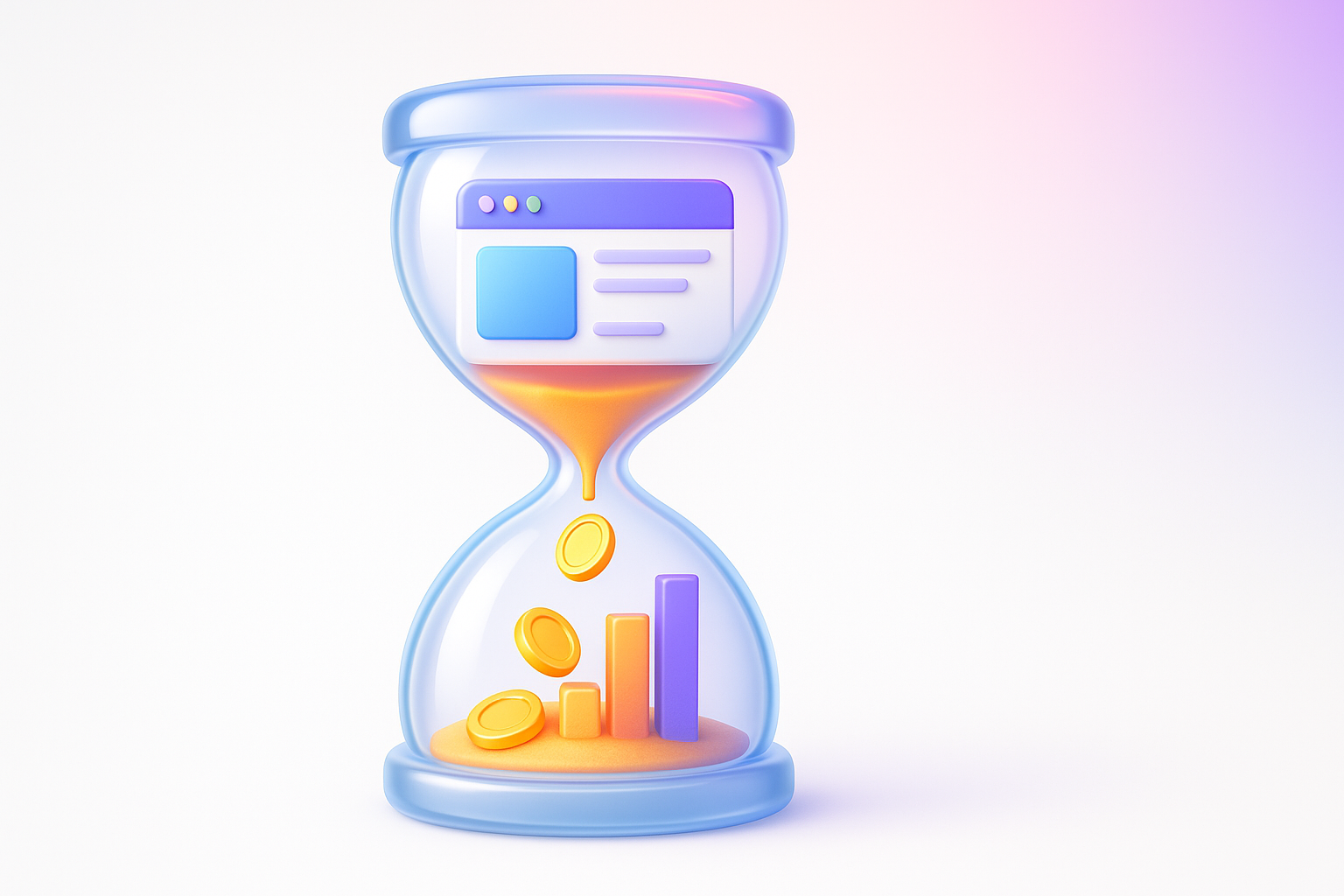What is Server-Side Tracking? And why is it necessary for e-commerce in the Privacy era?

The real problem in life
E-Commerce business owners or digital marketing have ever had a headache with these matters? Shoot a lot of Facebook, but the conversion numbers seen in ADS Manager with real sales in the back of the house do not match! Or sometimes feel that the information in Google Analytics (GA4) looks so unbeatable, as if not fully collected Resulting in not being able to analyze customer behavior, Retargeting is not as accurate as usual This problem is not caused by what you did wrong, but it is a big "warning sign" that says that the old data collection methods. Ours are about to use no longer effective in the age of the privacy of users first.
Prompt for illustrations: Marketer images are holding the temples in front of the computer that shows data graphs from Facebook Ads and Google Analytics, which the numbers do not clearly match. There is a privacy icon and a cracked cookie around.
Why did that problem occur?
The main cause of this turbulence comes from a data collection method called "Client-Side Tracking" or the tracking of the browser side. Which is a way that we have been using for many years. Simply put, when customers enter your website The embedded code (such as Facebook Pixel, Google Tag) will work directly on the customer's browser. Then send the information back to various platforms (Facebook, Google) immediately
The problem is ... This method is being heavily limited! Both from:
- The browser itself: SAFARI (with ITP) and Firefox (with ETP) Blog THIRD-PARTY COOKIES and some scripts have been tracked for a while. And most importantly, Google Chrome is about to stop supporting Third-Party Cookies.
- Ad Blocker: These tools are becoming more and more popular. And its main function is "blog". Script follows to not work.
- Information Protection Law: Laws like PDPA in Thailand and GDPR in Europe, the storage and use must be clearly conducted by users. Which has a direct impact on the work of the client-SIDE side. Understanding The differences and similarities of PDPA and GDPR are therefore necessary for modern e-commerce businesses.
All of this makes the information sent from the customer's browser to the marketing platform, the opportunity to "drop" or "blocked" to the middle of the road. This is the source that makes our information inaccurate and unreliable.
Prompt for illustrations: Simple comparison diagram on the left is "Client-Side Tracking". The user's browser shot the data to the Facebook logo, Google, Tiktok, but with a fire wall (Ad Blocker, ITP), causing some information to not reach. The right side is "Server-Side Tracking" that will be explained in the next topic.
If left, how will it affect?
Ignoring this problem is no different from the "eyes closed". The consequences are more intense than expected:
- Waste marketing budget: When you can't measure Conversion, you don't know which campaign is good. (Optimization) cannot be done that we are "burn money" with advertisements that may not be effective at all.
- Wrong business decisions: Information is the heart of the E-Commerce business. If the information acquired is different from the beginning of the strategic planning analysis Or sales predictions Have a chance to go all mistakes
- Loss of opportunities for Retargeting: When the customer behavior is not fully collected, creating Custom Audience in order to shoot repeatedly to the people who have entered the website or adding the baskets will not be effective. Makes you miss the opportunity to change the "interested person" to "customers"
- Worse customer experience: not to truly understand customer behavior May cause you to present products or promotions that do not meet them.
- Legal risks: non -strong data management may lead to the problem of violations of personal data protection laws in the future.
This is a "marketing disaster" that is stemped quietly. And the only way to survive is to adapt to the data collection methods that are more accurate and secure. The coming of Google Privacy Sandbox is another accelerator that causes us to quickly adjust.
Prompt for illustrations: The graph of the ROAS (Return on Ad Spend) value is down. With a wing bag with wings flying away Conveys a wasteful budget
Is there any solution? And where should it start?
The survival way of this problem is the technology called "Server-Side Tracking" (SST) or tracking the server.
Its principle is very easy to understand: instead of the customer's browser will send data to many platforms (which is at risk of blocking). We will change the browser to send all the data to "Our server" only one place before that, then "our server" is to be screened, manage, and send the information necessary to various platforms such as Google Analytics, Facebook Conversion Api, Tiktok Events API.
Compare easily. Client-Side Tracking is like allowing customers to shout to many people at the same time, which may not be heard or not allowed to listen, but Server-Side Tracking is like our customers whispered to the "personal secretary" (server), and our secretary will bring that information to the involved and safely.
The advantages of making Server-Side Tracking:
- Higher data accuracy: Reduce data from being blocked by the browser or AD blockers, resulting in complete and close information.
- Better information control: We can choose which information to send to which platform? And can filter or supplement some data before sending Truly owned the FIRST-PARTY DATA, which is the heart of the First-Party Data strategy.
- Superior safety: can hide the delicate information of the customer (such as PII - Personally Identifiable Information) from leaking with the Client -SIDE side script.
- Improved website performance: Reducing the number of scripts that must be loaded on the customer's browser. Helps the website to download faster Which is good for both the User Experience and SEO
For those interested in further technical studies It is recommended to read from the official data source of Google Tag Manager: Server-Side Taging and Simo Ahava , a world-class expert in this matter.
Prompt for illustrations: Clear comparison plan between Client-Side and Server-Side Tracking on the left (Client-Side). There are many arrows from the browser to various platforms. And there is a symbol "Blog" on the right (Server-Side). There is only one arrow from the browser to "Your Server". From the server, there are many arrows that are orderly to various platforms.
Examples from the real thing that used to be successful
In order to be clearer Take a look at the story of "BeautyBox", an online cosmetic shop that has experienced hard information. They found that the orders seen on Facebook and real sales on Shopify are up to 30%, making it very difficult to evaluate. The team decided to invest in using Server-Side Tracking using Google Tag Manager Server Container with Facebook Conversion API.
What happened after that was very remarkable:
- Before doing (before): the conversion data collected from Facebook Pixel (Client-Side) is only 70-75% precision, and the ROAS Retargeting campaign value is continuously decreasing.
- After doing (After): Only 1 month after using the Event Match Quality Score on Facebook, rising to 95%. They can see the routes of customers more clearly. Makes it possible to create a Retargeting campaign that is straight and effective. The results are 25% of the ROAS of the shop, with the same advertising budget!
This is a proof that investing in Server-Side Tracking is not just technical. But is an investment that directly affects the profits of the E-Commerce business.
Prompt for illustrations: Dashboard's "BeautyBox" images on the left (Before) showing a rough sales graph and a low Roas (After) showing a rising graph and a higher higher ROAS value. With the shop owner's smile
If wanting to follow, what to do? (Can be used immediately)
The beginning of the server-SIDE Tracking may seem technical. But can be divided into clear steps as follows:
- Set Server Container: The first step is to create a "house" for our information. Which is the server The most popular platform is to use the Google Tag Manager Server Container, which can be installed on the Google Cloud Platform (App Engine) easily and has a flexible cost.
- Data Source (Client): Tell the GTM Server Container to know where to receive the information. The main source is our website that has installed GA4 and GTM (the web container).
- Send data from the Web Container to Server Container: Adjust the tag on our GTM (such as GA4 Configuration Tag). Send data to the server container that we created directly to go to Google directly.
- Data Destination (Tags): In the GTM Server Container, we will set the tag to send the information received to the desired destination, such as sending to Google Analytics, Facebook Conversion API, Tiktok Events API etc.
- Test and check the accuracy: use Debugview tools in both GTM and destination platforms (such as Facebook Events Manager) to ensure that the information is sent and received correctly.
- Continuous adjustment and care: after actually use There should be regular inspection and maintenance.
This process requires a lot of technical understanding. If you feel too complicated Specialist consultation for Check and set up the Ecommerce Optimization system. It is a smart choice and saves a lot of time.
Prompt for illustrations: Infographic shows 6 steps to install Server-Side Tracking using an easy-to-understand icon for each step (such as cloud icon for server, arrow icon, tag, amplifier icon for testing)
Questions that people tend to wonder And the answers that are cleared
Q1: Is the Server-Side Tracking high cost?
A: There is an additional cost. The main service fee (such as Google Cloud), which will vary according to the traffic amount of the website, but compared to the accuracy of the data that will be returned and the advertising budget that will save from effective measurement. Considered as a very worthwhile investment in the long run.
Q2: Is it necessary to have a lot of knowledge about writing code?
A: Basic settings via Google Tag Manager and Google Cloud may not need complicated code writing. But requires understanding of the working principles of the network and API. If there is no internal technical team Hiring experts to help set the first part will be the best.
Q3: Server-Side Tracking will replace the Client-Side Tracking completely?
A: Not all. The best way is to work "Hybrid", still using Client-Side Tracking for something that is necessary, but using Server-Side Tracking is the main way to send information to various conversions to various platforms. For precision and safe
Q4: SST will be consistent with PDPA/GDPR 100%, right?
A: SST is a "tool" that allows you to manage data easier and safer. Which is an important part in the law But the main heart is still "Consent" (CONSENT) from the user correctly from the beginning. You must always have a good consent management platform (CMP) or COKIE Banner. Understanding GA4 and Consent Mode is also very important.
Prompt for illustrations: Image icons are pondering with a question mark (?) With clear answers appearing in the conceptual framework.
Summary to be easy to understand + want to try to do
The world of digital marketing is changing rapidly. The rely on the traditional data collection method (Client-Side Tracking) that is more limited day. It's like rowing out of the sea without a server-Side Tracking compass is "Digital Compass" that will help your E-Commerce business come back to measure the results precisely, spend every baht in every baht, and create good relationships with customers based on reliability and safety.
It may seem new and requires both time and resources in the first period. But the result is enormous and is a strong foundation for your business in the long run. Don't wait for your information to leak until you can't measure any results anymore. It's time to adjust and move forward steadily.
Opportunities for creating competitive advantage and increasing sales waiting for you! Start studying and planning to switch to Server-Side Tracking from today. Don't let your competitors lead you!
If you need a special partner to help place a strong data and design a premium e-commerce website that is driven by the Vision X Brain team information, with free consultation! Click here to talk to our experts.
Prompt for illustrations: Modern and strong E-Commerce ships Is rapidly sailing forward with the "Server-Side Tracking" compass "navigating the sun up as a backdrop Conveys a bright future
Recent Blog

Compare shocks, shock between Webflow and Framer for Startup that emphasizes the opening speed, beauty and scale ability.

Web speed is not just technical! In -depth that Core Web Vitals (LCP, Inp, CLS) affects SEO ranking, user experience And how the profit of the organization web

Don't overlook Footer! A collection of Website Footer design techniques that help improve UX, supplement SEO and change the visitors to become the Lead.






